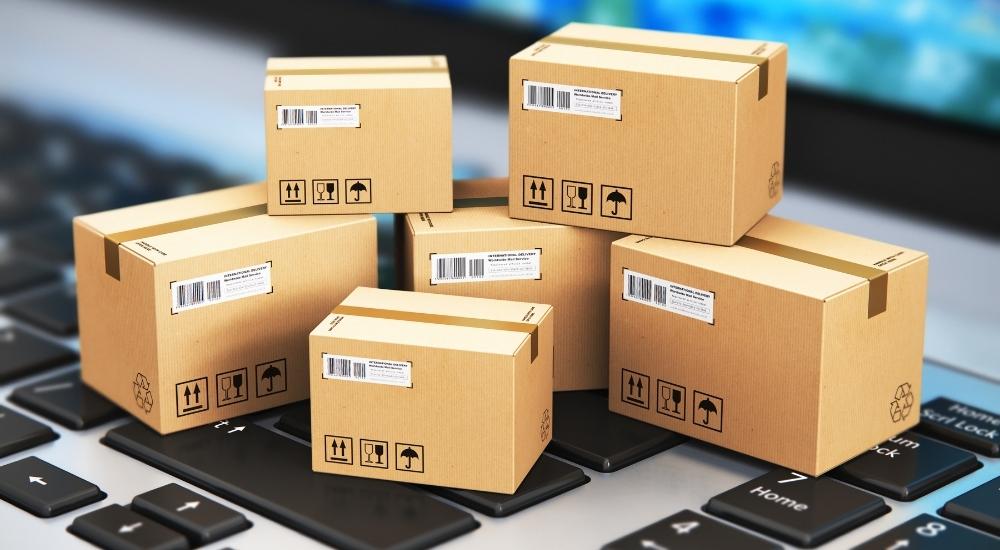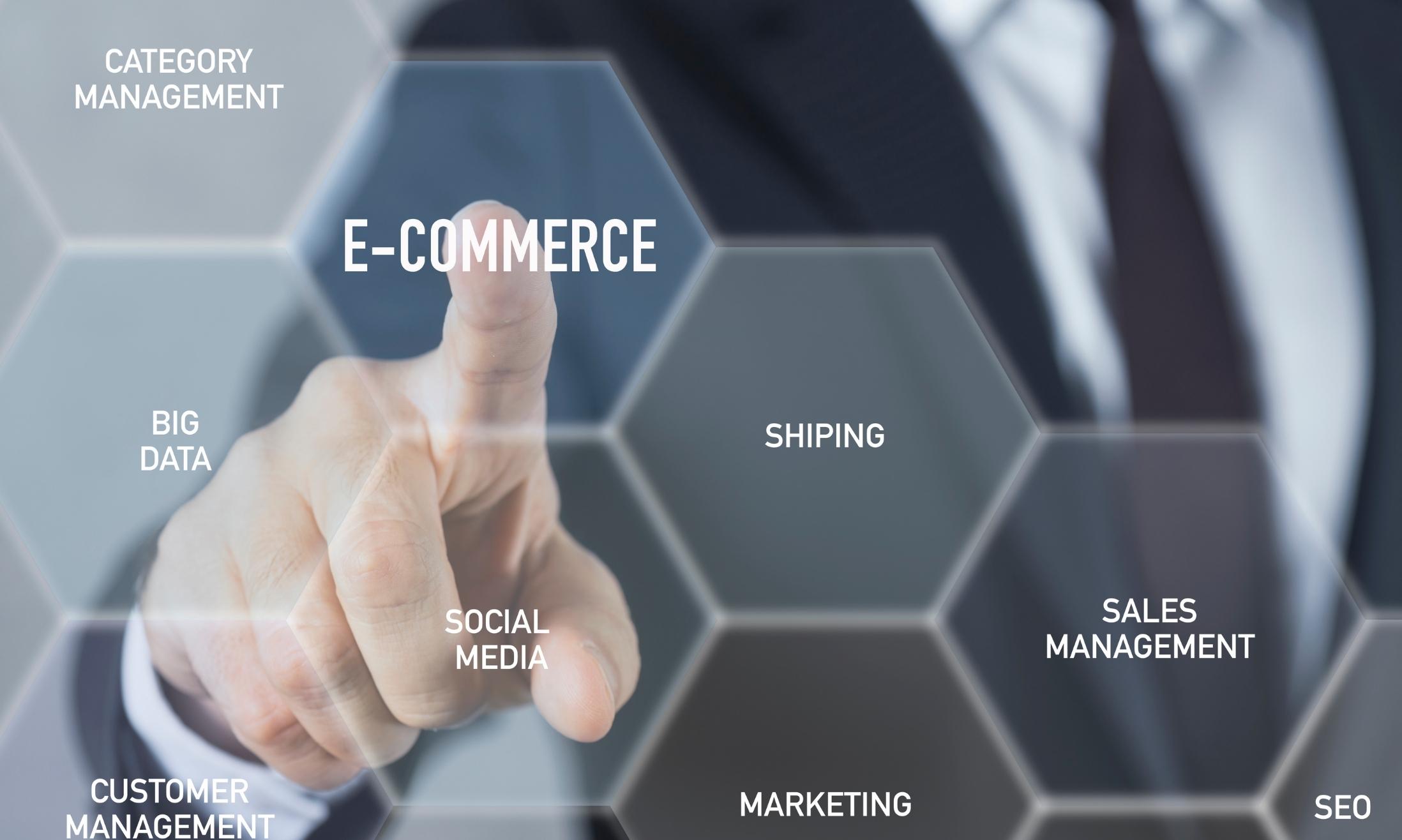An eCommerce ecosystem is a group of businesses and individuals who work together to support and grow the e-commerce industry. This combination facilitates the electronic buying process of customers and brings them a seamless shopping experience. Let find out what is the key components of an eCommerce ecosystem and how they combine to form a profitable network.
Components Of eCommerce Ecosystem
eCommerce Platforms
One of the main parts of an eCommerce ecosystem is eCommerce platforms. They are software applications that buyers and sellers use for online transactions. They provide a platform for businesses to sell products and services online and allow customers to purchase these products or services from a variety of different sources.
There are three primary kinds of eCommerce platforms: platform-as-a-service (PaaS), software-as-a-service (SaaS), and on-premises. PaaS lets businesses use a cloud computing service to build, manage, and expand their own eCommerce platforms. SaaS allows companies to access prebuilt eCommerce platforms from the providers they choose. On-premises refers to the traditional model where a business builds its own eCommerce platform in-house.
Some of the most popular eCommerce platforms include Wix, Squarespace, Commerce Cloud, BigCommerce, Shopify, Magento, and Salesforce. Each of these platforms has its own unique set of features and advantages. It’s important to choose the right platform for your business needs before starting to sell online.
Online Marketplaces

Online marketplaces are a great way to find unique and affordable products. They take the form of an app or eCommerce website designed to facilitate shopping, with goods and services offered by various sellers.
One of the biggest online marketplaces is Amazon, which has over two hundred million active customers worldwide. It’s easy to find what you’re looking for on Amazon, and there are always new products arriving in the marketplace so you can always be sure to find something that you’ll like.
Another popular online marketplace is eBay, which allows you to buy and sell a wide variety of items, from clothes to cars. You can also use eBay as a way to get your hands on rare items or collectibles.
There are numerous other online marketplaces that cater to different interests and tastes. So whether you’re looking for something specific or just want to explore a variety of options, an online marketplace is definitely worth checking out.
Online Retailers
Online retailers refer to a single vendor selling their product online via their website. They typically operate as eCommerce businesses, selling items such as clothes, food, and furniture.
There are a few reasons why online retailers are becoming increasingly popular. For one, it’s much easier for buyers compare to shopping online. This is because they can compare prices and read reviews from other buyers before making a purchase. It also makes it easy for shoppers to buy items that they wouldn’t be able to find in stores nearby.
Another reason why online retailers are enjoying increased popularity is because of the convenience factor. These businesses are able to ship their products directly to buyers’ homes or offices, which eliminates the need for buyers to go out shopping and spend time in malls or other retail locations.
Finally, online retailers cater to a wider range of buyers than traditional brick-and-mortar stores do. This is because they’re able to reach a wider range of people by selling products that are not typically found in traditional retail stores.
Warehouse Management Systems (WMS)

Warehouse management systems (WMS) are software applications that help manage a warehouse’s inventory and logistics. They can be used by both small businesses and large organizations, and many third-party logistics (3PL) companies and private warehouses often rely on them to assist with their operations.
One of the most popular WMS software platforms is Amazon Web Services (AWS) eCommerce fulfillment center solution, which is used by millions of customers worldwide. AWS also offers an online store fulfillment solution, which uses WMS to monitor and manage orders as they’re dispatched from the warehouse to the customer’s doorstep.
WMS software has several advantages over traditional manual systems. For one, it can automate many tasks that would traditionally be handled manually, such as order processing, order picking, package handling, and warehousing. This allows businesses to focus on more important matters, like producing products or serving customers.
In addition, WMS systems are usually easier to use than traditional warehouse management systems (WMS). This is because they are designed for users who need quick access to data in order to make informed decisions about how to organize and run their warehouses.
Overall, Warehouse Management Systems (WMS) is a valuable tool for businesses of all sizes who need assistance managing their inventory and logistics.
ERP Systems

ERP systems are a type of software used to integrate business processes into a single network. This makes it easier for businesses to manage their operations and track their progress.
ERP systems come in many different flavors, but the most common ones are those that help with financials, sales, inventory, and customer management. They can also help companies manage their data more effectively, making it easier to find and analyze trends. ERP systems can even help companies improve their customer service by centralizing information about customers across all channels.
Those important functions make ERP systems become an integral part of eCommerce ecosystems.
Marketing
eCommerce ecosystems require a strong marketing platform in order to drive traffic to the site and convert leads into customers. There are a number of different options for marketing platforms, but the most popular ones include Google AdWords, Facebook Ads, and Amazon Associates. AdWords is the most popular advertising platform because it offers a wide range of capabilities and features that are tailor-made for eCommerce sites. Facebook Ads is preferred by smaller businesses because of its ability to target specific demographics, while Amazon Associates allows businesses to earn commissions on sales made through their affiliate links.
Payments

eCommerce ecosystems require a platform that can facilitate payments between different stakeholders. Popular platforms for this include PayPal and Stripe. PayPal is preferred by larger businesses because it offers a wide range of capabilities and features, while Stripe is preferred by smaller businesses because it allows them to easily process payments without having to deal with credit card processing fees.
Shipping & Logistics
eCommerce ecosystems require a platform that can facilitate shipping and logistics between different stakeholders. Popular platforms for this include Amazon FBA and SmallBizDirect. Amazon FBA is preferred by larger businesses because it allows them to operate their own warehouses, while SmallBizDirect is popular among smaller businesses because it offers reduced shipping fees compared to other options.
How to Build A Successful eCommerce Ecosystem
Constructing eCommerce ecosystems is complicated, but you can follow some practices mentioned below to simplify this task.
Understand How Your Platform Works
Map out how your platform works by creating a flowchart. This will help you understand the entire process from start to finish and make sure that everything is running smoothly.
Start by thinking about the main steps that users need to take in order to use your platform. Then figure out which screens they’ll see on those steps, and finally map out how each screen works. Make sure that all the necessary information is easy to access and that users can navigate around it easily.
Finally, test your flowchart so that you can ensure that it works as intended. If there are any problems or gaps in the system, you’ll be able to fix them quickly and efficiently.
Identify And Enhance The Connection Process
One of the biggest problems with slow sites is that people don’t stay on them long enough to see what you’re selling. If your site isn’t fast and gets bogged down by the item list, people aren’t going to stick around to see what you’re selling.
There are a few things that you can do to improve this situation:
- Make sure that your site is responsive so that it looks good on all devices.
- Try using a widget or embedding an Amazon search bar so that customers can easily find what they’re looking for.
- Use video content to make your site more engaging and fun to browse. This will keep people coming back for more.
Facilitate The Navigation
It’s important to make sure your query is accurate before you submit it. This will help reduce the amount of time and resources that need to be spent on research.
To assess the ease of navigation, you can use a variety of methods, including keyword density, search volume, and competition analysis. You can also check to see how many backlinks the webpage has, as this will indicate how popular it is and how relevant the information on it is.
Once you’ve assessed the ease of navigation, make sure that all your keywords are included in your query so that you’re targeting the right audience. Also, try to use synonyms and plurals so that your results are more relevant and user-friendly.
Conduct The End-Of-The-Sale Process

End-of-the-sale processes are an important part of any business, and they play a vital role in promoting repeat business.
Some of the best ways to thank your customers for their patronage and encourage them to return again in the future are by offering “specials” like free items, discounts, or other recommended items. This will show them that you appreciate their business and that you’re willing to do whatever it takes to keep them as customers.
Another effective way to motivate users to return is by reminding them of what they missed out on during their last visit. This can be done through email campaigns, social media posts, or even promotional materials in the store itself. By keeping your users informed about what’s going on, you’ll make sure that they don’t miss out on anything important and that they know why it’s so important for them to stay loyal to your business.
Understand Shipping Is Ungovernable
Shipping delays are a reality for all entrepreneurs, no matter how prepared they may be. In fact, shipping delays are actually one of the most common issues that startups face. Why? Well, because there’s just so much happening at once in the startup world!
As soon as a product or service is created, it needs to be shipped to the customer. This means that there are multiple people and processes working simultaneously to make this happen as quickly and efficiently as possible. But even with all of these efforts, shipping delays can and do happen from time to time and impair your eCommerce ecosystem.
The best way to approach this is to stay calm and understand that it’s not your fault. Remember: you’re not responsible for any mistakes that were made by other members of the team or by the shipping company itself. And don’t stress out – everything will eventually work out in the end!
Wrap Up

In a nutshell, the best way to build eCommerce ecosystems is by relying on the components listed above. When you do so, you will get a smooth and profitable journey from start to end.
You may already have a website that caters to your product range. But do not stop yet. This time you need to expand into more areas like shipping, customer support, and marketing. As a brand new eCommerce entrepreneur, you must know how to build an ecosystem around your business to stand out in this cutthroat market! So keep these tips in mind and you’ll be on track for success soon enough.

